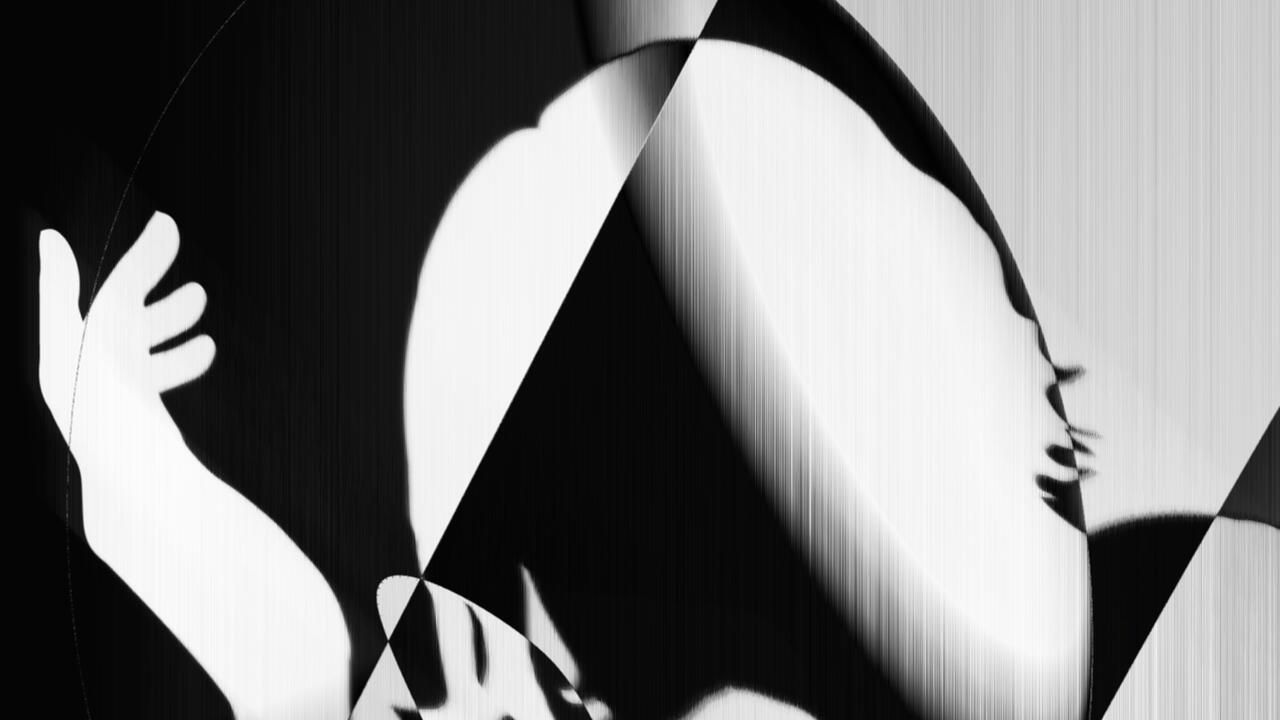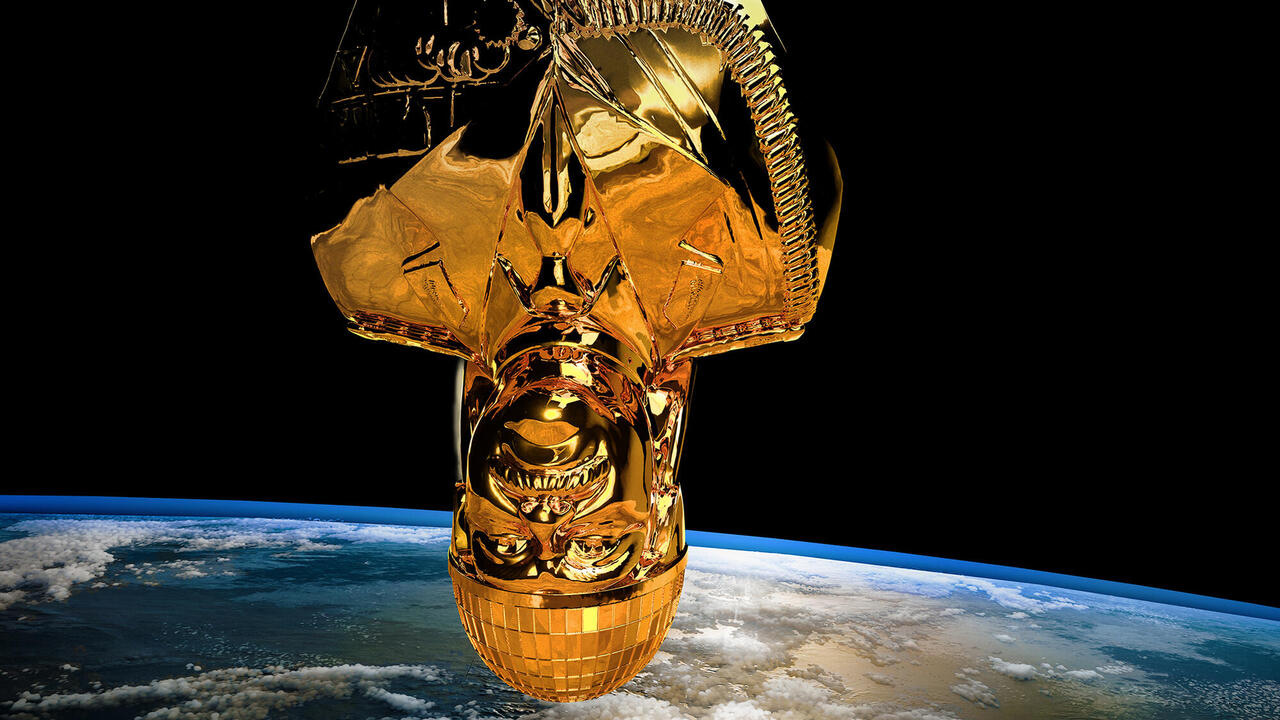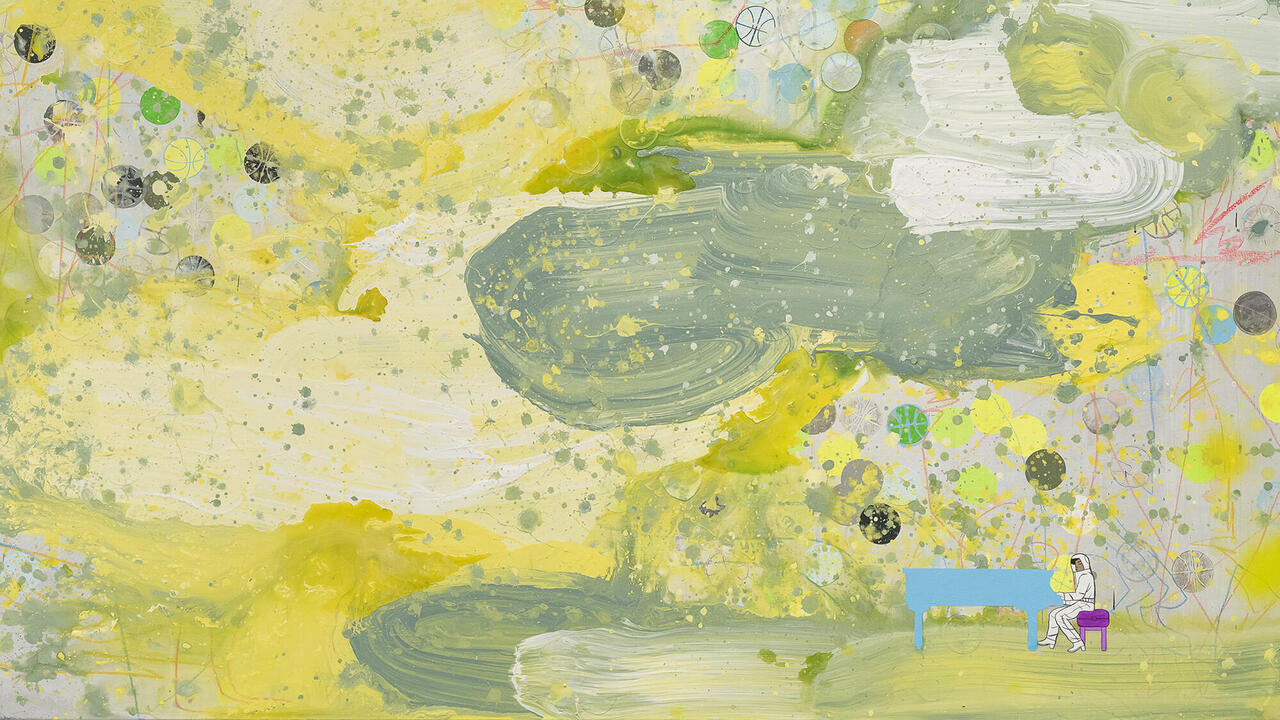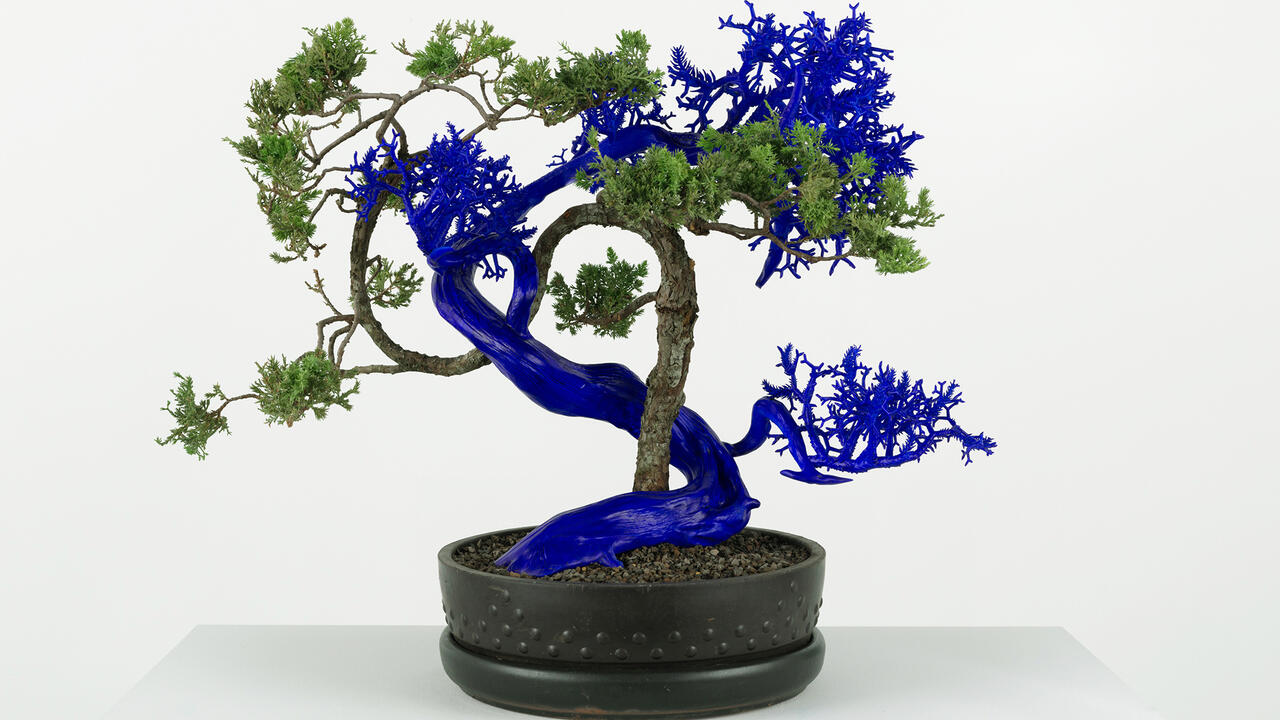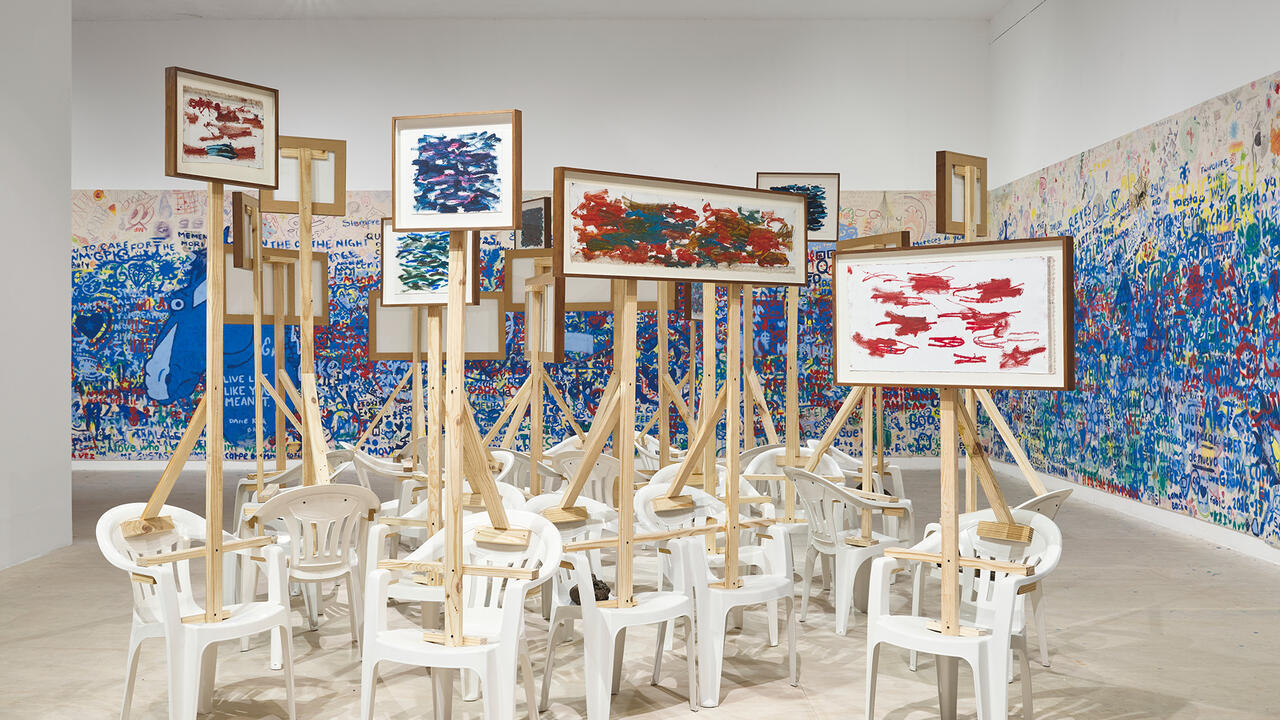Mike Nelson's Labyrinth of Concrete
The artist is taking over New York's Building D on Essex Street Market, with his new installations that resemble a horror story
The artist is taking over New York's Building D on Essex Street Market, with his new installations that resemble a horror story

Although it was closed to the public for 13 years, Building D of New York’s Essex Street Market wasn’t entirely unoccupied. While busy creating A Psychic Vacuum (2007), an ambitious site-specific project co-organized by Creative Time, Mike Nelson discovered a garret sectioned into cubby holes, apparently for some uncertain illicit activity. He placed an item left there – a torn half of a US map someone had crudely but touchingly completed with a black marker – in a room with a knife, a fake human skull and a portrait of the Kennedys under cracked glass. Elsewhere in a ‘real’ space, an abandoned Chinese restaurant played a more crucial role as an authentically grimy portal into A Psychic Vacuum’s elaborate fiction, recalling the book to which the title alludes, Stanislaw Lem’s A Perfect Vacuum (1971), whose first chapter is an introduction to reviews of non-existent books.

Entering the labyrinthine installation through a nondescript door on bustling Delancey Street, visitors encountered benches and tables, dishware, MSG vats and a golden Lucky Cat – all furry with dust and ancient grease. Beyond lay a waiting area bedecked with tattoo designs, followed by a warren of corridors, rooms, locked doors and blind alleys where ad hoc voodoo shrines and cluttered hideouts proliferated. A freezer-like space held crumpled beer cans and a glittery snowflake dangling from a menacing hook. Everywhere grim fixtures, scuffed trim and carefully calibrated ceiling heights helped set a scene redolent of cellars stuffed to the gills with rusted metal, mildewed wood and assorted detritus.
Just when escape seemed nearly possible, a room mimicking another that had already been passed through created a sense of déjà vu and entrapment. Then a cavernous area littered with tyres and motor-cycle helmets (ghosts of Scorpio Rising?) led into an interstitial space containing an enlarger and photographs hanging in ruddy gloom. Nelson has deployed the dark-room motif to various ends. Mirror Infill’s photo lab at the 2006 Frieze Art Fair documented the hectic commercial environment surrounding it. There was a degree of ‘Situationist psycho-geography’ in Nelson’s Margate installation of 2005, which incorporated depictions of the town’s physical terrain. Nelson often shoots the photos, but in A Psychic Vacuum he hung found photographs of star and cruciform shapes, producing a reflection at once anxious and opaque.

Monsters lurked in this labyrinth, of course. A cul-de-sac at the end of a green hallway contained a strait-jacket and baseball bats; elsewhere a maniacally clicking ceiling fan kept watch over a bloodstained American flag and scattered bones. Details were chilling, such as a scrawled symbol like the one used by the Zodiac killer, hidden in graffiti by a dive bar’s phone and 1971 calendar. In general, the socio-political context of the 1960s–’70s overlapped with the present to potent effect. (Perhaps this has a generational aspect – Nelson may be British, but he could have been tapping into my own hazy memories of Vietnam, not to mention the JFK portrait that used to hang in my great-grandmother’s hallway, above a burning votive.) Throughout, one had the sense of following someone or something only recently vanished. Eventually, after cycling through spaces more than once, one had the nagging feeling of being – in Borgesian fashion – close on one’s own trail. It was like finding an old diary and wondering about the person and actions described within. Did I kneel before this cobbled-together shrine? Drink from flag-emblazoned cups with war buds in a streamer-festooned dive bar? Pore over Psychic Discoveries Beyond the Iron Curtain at a skuzzy work-table beneath a talismanic bundle of wishbones? Collect military cards? Commit an unspeakable crime in some hidden, airless space?
A dramatic conclusion awaited the persistent wanderer – a massive sand dune, and the realization that the labyrinth lay underneath it. In A Psychic Vacuum Nelson aimed for a kind of reversal of his pivotal Coral Reef (2000), a pre-9/11 installation he now sees as prescient. Here the sand was emblematic of a power shift from an economic to an ideological structure and drew on ‘all of the connotations of sand […] the visibility it has at the moment.’ One thought of Iraq, Robert Smithson’s Partially Buried Woodshed (1970), time and oblivion.

In his essay ‘Up in the Old Hotel’ (1952) the legendary New York reporter Joseph Mitchell, who trailed local characters from junk collectors to gypsy con-artists, recounted how he helped an acquaintance break into a building’s long-inaccessible upper floors. When they confront ancient furniture and apocalyptic ephemera, it shades into a horror story. Phillip Lopate has written of the essay that ‘the décor of decay […] has echoes of Poe and Hawthorne. There is a Gothic sensibility as well in the claustrophobic, obsessive accumulation of detail – or the rats that leap out of drawers, “snarling”.’ Nelson didn’t draw directly on the market’s history, but his fascination with downtown Manhattan’s storefront clairvoyants – he notes an unusual amount of such supernatural activity here, suggesting a powerful need for belief outside mainstream religion – recalls Mitchell’s burrowing into Gothamites’ esoteric obsessions. In this he seems to have divined something essential about New York and its ghosts.
Main image: Mike Nelson, 'A Psychic Vacuum', 2007, installation view. Courtesy: Creative Time; photograph: Charlie Samuels











